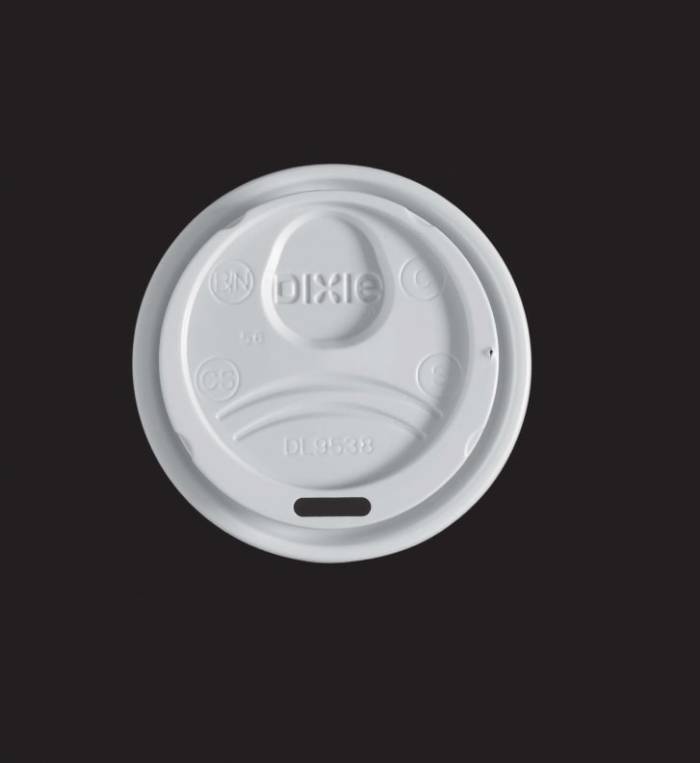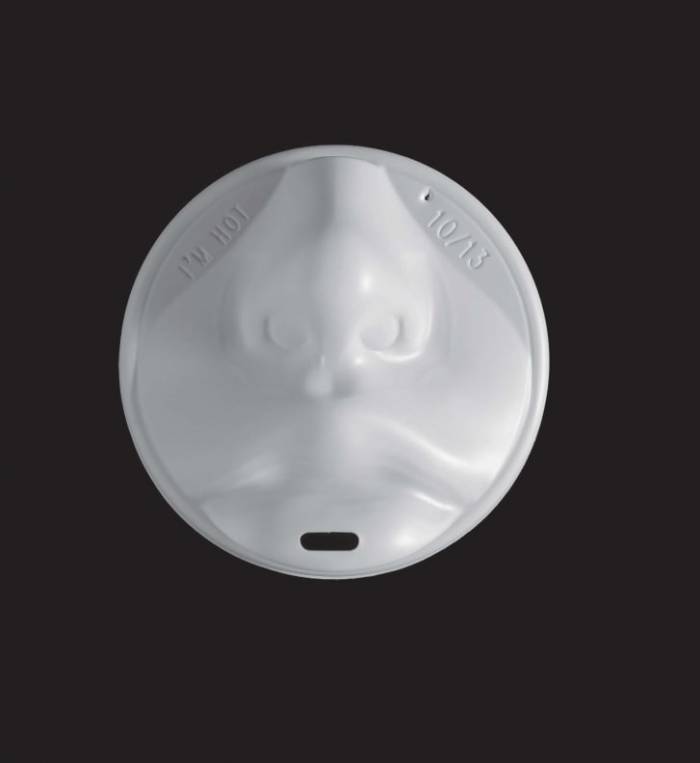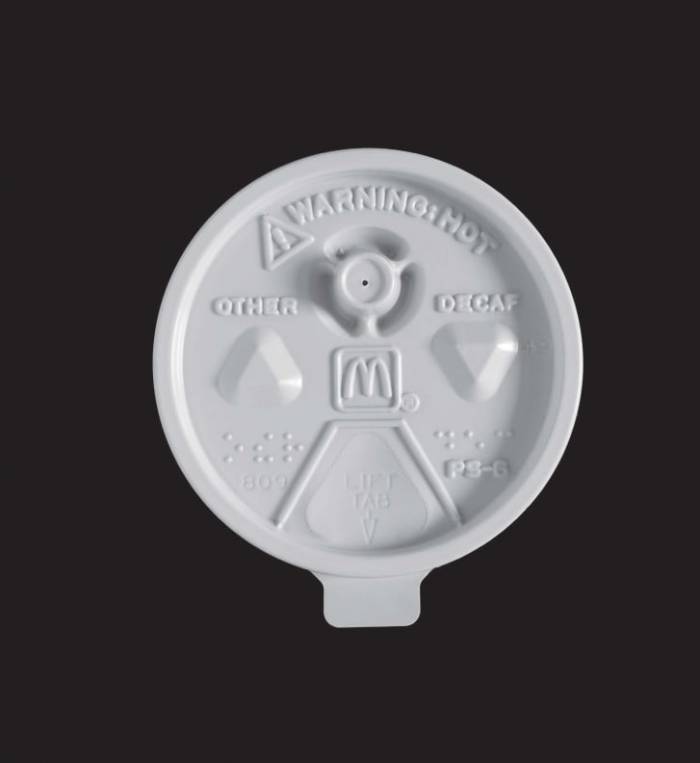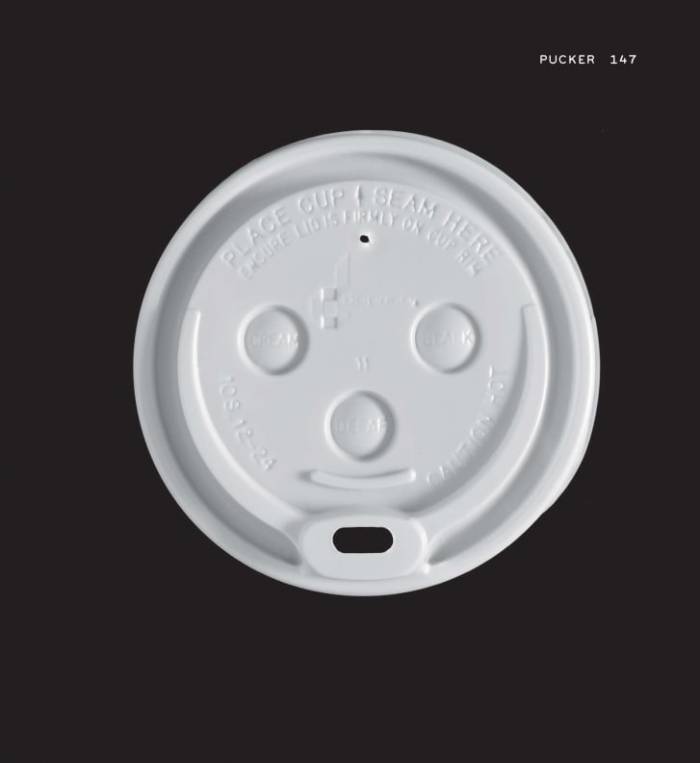Harpman admits that being a collector is a "disease with no known cure," though her affliction is much more than a curious pastime. The architect and professor wants her lids to tell a story of contemporary industrial design.
"There's so much design intelligence behind these humble objects," she said during a phone interview. "I use the lids in my teaching. There's everyday wonder and beauty in these objects, and I think it's important for people to see things in a fresh way.
"Every time I start one of my design classes I talk about the arrow hidden in the FedEx logo -- at least half the class hasn't seen it. So then you start to wonder what else they're missing."
Harpman and Specht's book, "Coffee Lids," puts the pair's collection into context through essays, patent diagrams and photographs that -- when viewed in quick succession -- reveal the subtle differences in design.

Designs listed in the chapter "Pucker" -- where users drink through an aperture in the lid, not the cup -- appear to have prevailed in recent years. Credit: Benjamin English / Princeton Architectural Press
Categorizing the lids by the way they're used (chapters are titled: Peel, Pinch, Pucker and Puncture), the book features everything from molded apertures to fold-back tabs. In doing so, it reveals an astounding variety of solutions for a simple design problem -- transporting hot coffee without spilling it.
"It totally undercuts this idea that form follows function," Harpman said. "The function is: 'I want to take a hot liquid from one place to another.' If there was only one form to follow that function, then we'd only have one (type of lid). But we have this profusion, this explosion -- a dizzying array of forms for that one function."
Design through the decades
With examples dating back to the 1970s, the book tracks the development of features we now take for granted, like the convex dimples used by baristas to denote sugar, milk and other preferences.
The very earliest innovations -- including the simple idea that lids not only contained coffee, but could be drunk through -- were driven by users, not designers, Harpman said.
"College kids and taxi drivers would make their own perforations in flat lids to get this reliable aperture. You saw the DIY community take hold, and then designers and manufacturers caught on."

One of the most unusual lids in the book is a South Korean design featuring a protruding nose and lips that drinkers effectively kiss upon taking a sip. Credit: Benjamin English / Princeton Architectural Press
By the 1980s, however, the proliferation of takeout coffee was transforming the cup design industry. Harpman's studies of the US patent registry found that during this decade, there were almost three times as many patents for "drink-through hot beverage lids" than in the 1970s.
"Human behavior changed," Harpman said. "Being American, we were so impatient that we couldn't wait until we got where we were going to drink our coffee -- we had to take a little sip along the way.
"So then the question was: how can we furnish a reliable aperture that would neither violate the integrity of the lid nor pop up and spill hot coffee everywhere? The design community woke up and said, 'aha we can solve this.'"
Ongoing innovation
In pursuit of reduced spillage and easy drinking, designers began experimenting with all manner of solutions, from molded grooves that catch spilled liquid, to elevated mouthpieces that prevent users' top lips from touching the lids.

A McDonald's coffee lid featuring Braille markings and a prominent safety warning. Credit: Benjamin English / Princeton Architectural Press
Harpman and Specht's book also chronicles more recent developments, like the introduction of warning messages which, according to Harpman, became more prominent after a high-profile 1994 case in which McDonald's had to pay damages to a woman who had suffered burns from a takeout coffee. By the 2000s, the popularity of foamy drinks, like lattes and cappuccinos, resulted in a growing number of raised lids that can accommodate the frothy toppings.
Designs listed as "pucker" -- where users drink through the lid, not the cup -- appear to have prevailed in recent years. But designs requiring coffee-drinkers to pinch a small opening are making a comeback (despite being "considered a Darwinian dead-end"), Harpman said, as some of today's consumers would rather their lips touch the cup's edge than a plastic lid.
And despite four-decades' worth of improvements, there's still room for innovation. One of the most unusual lids in Harpman and Specht's collection is a South Korean design featuring a protruding nose and lips that drinkers effectively kiss upon taking a sip. Another of the duo's modern lids -- albeit just a prototype -- sports an in-built "aroma pod" that can be filled with coffee granules (or other scents), offering drinkers a further sensory blast.

A common design feature is convex dimples that can be pressed by baristas to denote cream, milk or other preferences.Credit: Benjamin English / Princeton Architectural Press
The future of coffee lids may have more to do with materials than ergonomics. Harpman expressed her unease at growing plastic consumption, calling for fully compostable lids and a tax on disposable cups (the so-called "latte levy").
"Much as I love my collection," she said, "I actually hope that this whole category of plastic items goes by the wayside. I really think we need to change our behavior.
"Our (American) coffee drinking conventions are taking hold in many other places now, and the result is an extreme amount of waste. People carry their own water bottles around, so why wouldn't you also carry a refillable coffee cup?"
CNN
More about: coffeelid

























-1731503623.jpg&h=190&w=280&zc=1&q=100)






















